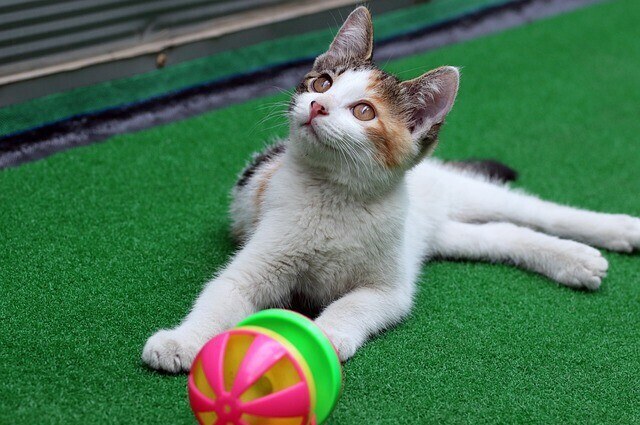“The Ultimate Guide to Special Needs Pet Sitting Success” provides a comprehensive guide to providing the best care for pets with special needs, covering behavioural and physical restrictions, designing unique homes, and creating customized care regimens. It also helps in communication and bonding techniques.
Let’s dive into their world so that we can become empathetic and knowledgeable sitters.
Understanding Special Needs Pet Sitting
It’s not easy looking after special needs pets. Identifying and appreciating this is necessary for providing exceptional pet care, and addressing physical restrictions and behavioural issues, thereby fostering their success and happiness.
Recognizing Various Special Needs in Pets
Understanding the unique challenges faced by pets is necessary for providing optimal care. Here are common special needs to look out for:
- Mobility Restrictions: To improve mobility for pets with arthritis, joint issues or amputations, consider installing ramps, orthopedic beds, or modified spaces.
- Sensory Impairments: Dogs with blindness or deafness may require specialized interactions with humans, aided by verbal, tactile, or scent cues for communication.
- Chronic Health Conditions: Conditions like diabetes or epilepsy demand consistent monitoring and medication.
- Behavioural Challenges: Pets may exhibit aggression, anxiety, or obsessive behaviours. Determine what sets them off, create a safe space, and consider changing their behaviour.
- Age-Related Needs: Because of cognitive decline or decreased mobility, senior pets may need extra care.
- Allergies and Dietary Restrictions: Food sensitivities and environmental conditions can influence dietary decisions.
Importance of Tailoring Care to Individual Needs
You must realize that there is no one-size-fits-all approach to special needs pet sitting. Adapting your methods to the unique requirements of each pet improves their general well-being.
- Improved Comfort: Identifying and meeting individual pet needs is important for creating a stress-free environment. For pets with physical restrictions or long-term medical issues, this ensures comfort.
- Emotional Well-Being: Personalized care fosters a sense of security by creating a comforting emotional environment by understanding their preferences and triggers.
- Health Optimization: Customized care plans can improve chronic health condition management by incorporating suitable nutrition, exercise modifications, and consistent medication schedules.
- Trust Building: Attending to a pet’s particular needs helps foster trust, particularly when the pet has sensory impairments.
- Overall Satisfaction: Providing personalized care that caters to individual needs enhances the satisfaction of both the pet and the owner.
Consulting with Pet Owners and Veterinarians
Regular consultations between veterinarians and pet owners are necessary for a comprehensive and knowledgeable approach to pet care. This is especially true for managing special needs pet sitting.

- Understanding Owner Insights: Start by gathering detailed information from pet owners regarding their pet’s medical history, preferences, and routine.
- Establishing Clear Expectations: Clearly define expectations with pet owners regarding the level of care required. This includes routines, medications, and any special instructions.
- Working together with Veterinarians: Talk about emergency plans with veterinarians and owners, and make sure you are aware of any warning signals or symptoms of distress.
- Emergency Preparedness: A clear plan in place helps you be ready for unforeseen circumstances.
- Frequent Check-ins: Keep the lines of communication open during the duration of your pet-sitting assignment.
Creating a Comfortable Environment
Pets love a secure, cozy environment. We will explore creating pet-specific spaces, emphasizing adaptive home designs and selecting appropriate toys and accessories. This is all part of being a special needs pet sitter.
Adapting Home Spaces for Special Needs Pets

For your pet’s comfort and well-being, it is essential to design a home environment that meets all of their unique needs. Here are some ideas for modifying your living areas:
- Accessible Sleeping Areas: Ensure sleeping areas are easily accessible such as on the main floor, especially for pets with mobility challenges.
- Ramp Access to Furniture: To make it simple for pets to reach furniture or higher areas, install ramps or steps. Pets with joint problems, such as arthritis, will benefit from this.
- Secure Boundaries: Use gates or other barriers to establish secure boundaries that keep pets out of potentially dangerous areas.
- Non-Slip Flooring: If your pet has mobility issues, choose flooring with non-slip surfaces to avoid accidents.
- Accessible Food and Water Stations: For pets with back or neck issues, place the food and water bowls at a height that is comfortable for them.
- Comfortable Resting Spots: Provide cozy rest areas, particularly for pets who suffer from arthritis or other long-term ailments.
- Temperature Regulation: Make sure the lighting and temperature in your house are properly controlled. For pets with particular medical conditions or sensory impairments, this is very important.
Selecting Appropriate Toys and Accessories

When it comes to special needs pet sitting, choosing the right toys and accessories can make a significant impact on their well-being. Here’s what you need to consider:
- Tailoring for Mobility Levels: If your pet has trouble moving around, choose interactive toys that they can play with from the comfort of their own home.
- Sensory Stimulation: Toys that stimulate a pet’s remaining senses, such as textures, scents, or sound, can enhance their sensory experience.
- Avoiding Choking Hazards: To prevent choking, choose toys that are appropriate in size and free from small, easily detachable parts, ensuring they are free from small, easily detachable parts.
- Comfort-Centric Beds and Blankets: Invest in orthopedic-friendly beds, soft blankets, or heat pads for pets with arthritis, providing additional comfort and support.
- Interactive Feeders: These can help combat boredom and provide mental stimulation. This is especially beneficial for pets with chronic health conditions, making mealtime more engaging and enjoyable.
- Adapting Collars and Harnesses: Choose adjustable, padded collars and harnesses for a secure, comfortable fit without affecting physical conditions.
Temperature and Lighting Considerations
Humans love their comforts. Pets are no different. Ensuring an optimal temperature and lighting environment is essential for the pet’s care during your special needs pet sitting. Consider these considerations:
- Temperature Moderation: Maintaining a moderate and comfortable home temperature is crucial for pets with specific health conditions or sensitivities to ensure their well-being.
- Monitoring Heat and Cold Sensitivity: Keep your pet’s temperature sensitivity in mind and adjust your heating or cooling systems accordingly to ensure they remain comfortable.
- Providing Warmth for Senior Pets: Offering heated blankets or beds can provide extra warmth and comfort for senior pets, especially during winter.
- Natural Lighting Exposure: Ensure your pet’s daily exposure to natural lighting to improve their overall well-being and circadian rhythm.
- Dimming Lights for Sensory Comfort: This adjustment can reduce potential discomfort caused by bright lights.
- Adjusting Lighting for Nighttime: Provide your pet with low-level lighting at night if they have vision problems. This makes navigating their environment less stressful for them.
Developing a Specialized Care Routine
The process of creating personalized pet care plans includes feeding, medication, and exercise routines, to ensure the health and happiness of your pet. It equips pet owners and sitters with the knowledge to provide top-notch care during special needs pet sitting.
Customized Feeding and Medication Schedules

Crafting a personalized feeding and medication routine is pivotal in ensuring the well-being of your special needs pet. Here’s your guide to tailoring these essential aspects of care:
- Understanding Dietary Requirements: Understand your pet’s dietary needs, especially allergies or sensitivities, and consult with your veterinarian to create a nutrition plan that aligns with their health conditions.
- Scheduled Feeding Times: Establish a consistent feeding schedule to help your pet’s digestive system. For certain health conditions try smaller, more frequent meals.
- Administering Medication: Incorporate medications into meals or use treat-dispensing toys to make the process stress-free.
- Monitoring Food Intake: This is important, especially if they have specific dietary restrictions, Adjust portion sizes based on their individual needs and activity levels.
- Hydration Awareness: Provide your pets with fresh water and wet food as a supplement.
- Regular Veterinary Check-ins: Schedule regular veterinary check-ups to reassess and adjust your pet’s feeding and medication plans.
Exercise and Play Strategies for Different Abilities
Modifying exercise and play activities to your special needs pet’s abilities is key to their physical and mental well-being. Here are strategies to ensure they stay active and engaged while you are special needs pet sitting:
- Low-Impact Exercises: Low-impact exercises like gentle walks, swimming, or controlled indoor activities are ideal for pets with mobility issues to maintain joint health without straining their joints.
- Interactive Toys for Mental Stimulation: Regardless of their physical capabilities, they can be kept mentally occupied with puzzle feeders or toys that dispense treats.
- Modified Play Sessions:. Short, frequent playtimes may be more suitable for pets with chronic conditions or aging concerns.
- Incorporate Gentle Training: This not only provides mental stimulation but also strengthens the bond between you and your pet.
- Supervised Outdoor Exploration: Create a safe, outdoor space for your pet, especially if they are visually impaired, to ensure their safety and enjoyment.
- Regular Monitoring and Adaptation: Be prepared to adapt the routines based on their changing needs or abilities.
Monitoring Health Signs and Emergency Preparedness
Being aware of the pet’s health during your special needs pet sitting is important for their overall well-being. Here’s how you can monitor their health signs and ensure emergency preparedness:
- Regular Health Checks: Look for any changes in their skin, fur, eyes, or behaviour that might indicate health issues.
- Observing Eating and Drinking Habits: Sudden changes, such as loss of appetite or increased water intake, could be signs of underlying health concerns.
- Behavioural Changes: Unusual restlessness, lethargy, or aggressive behavior may signal discomfort or pain.
emergencies
- Maintaining Health Records: Records should include vaccination schedules and medication details. This is vital for vet visits and emergencies.
- Emergency Kit Preparation: In the kit, include medication, vet contact information, and any specific items your pet may need in case of evacuation.
- Knowing Emergency Protocols: Understand the steps to take in case of sudden health crises or accidents.
- Regular Veterinary Consultations: Regular visits help identify potential health issues early and allow for proactive management.
Communication and Bonding Techniques
It is necessary to develop understanding, trust, and affection with pets to master communication and bonding while special needs pet sitting. Here we will focus on building trust, interpreting nonverbal cues, and comprehending effective communication techniques to strengthen relationships, improve companion wellbeing, and create a lasting relationship.
Building Trust with Special Needs Pets
The foundation of a solid relationship with your special needs pet is building trust. The following are some tips for building trust in your relationship:
- Patient and Calm Approach: This is especially essential for pets with anxiety or past traumatic experiences.
- Consistent Routine and Predictability: Provide a sense of predictability. Pets, especially those with special needs, thrive on knowing what to expect.
- Gentle Handling and Touch: Handling your pet with care is particularly important for pets with physical limitations or sensitivities.
- Positive Reinforcement: Rewarding good behaviour fosters a positive association and builds trust.
- Respect Personal Space: Allow your pets to initiate interactions, and avoid overwhelming them with too much attention.
- Understanding Non-Verbal Cues: Understanding their signals helps you respond appropriately to their needs and feelings.
- Create a Safe Haven: Having a secure area where pets can retreat enhances their sense of safety and trust.
Understanding Non-Verbal Cues and Communication

If pets could talk, you would be surprised at what they might be thinking. Understanding nonverbal cues is essential to building a genuine bond during the special needs pet sitting. Here’s how to read their cues and improve your interactions with them:
- Observing Body Language: Changes in posture, tail position, or facial expressions convey valuable information about their feelings.
- Tailoring Responses to Comfort Levels: If pets show signs of stress or discomfort, adjust your approach to make them feel secure.
- Recognizing Stress Signals: Signs like excessive panting, pacing, or avoiding eye contact indicate potential stressors.
- Interactive Play for Bonding: Play activities can provide insight into your pet’s preferences and build trust through shared positive experiences.
- Establishing Routine Signals: Whether it’s a specific touch or a verbal cue, consistency in your signals helps your pet understand your intentions.
- Listening to Vocalizations: Whines, barks, or meows may have distinct meanings, and recognizing these cues enhances your understanding of their needs.
- Encouraging Verbal Responses: Respond positively to any vocalizations your pet makes, reinforcing their communication attempts.
Importance of Consistent Interaction and Affection
Building a solid and reliable relationship with your special needs pet requires regular engagement and affection. Here’s why it matters and some tips for implementing it in your daily routine.

- Building a Routine of Affection: Regular cuddles, gentle strokes, and positive touch contribute to a sense of security and well-being.
- Creating Positive Associations: Associating your presence with warmth and care builds trust and reinforces the bond.
- Scheduled Quality Time: This ensures they receive the attention they crave, especially if they have specific comfort needs.
- Positive Reinforcement through Affection: Rewarding desired behaviours with love and attention reinforces those behaviours and strengthens your connection.
- Understanding Individual Preferences: While some pets might enjoy being held, others might prefer soft pats. Adapt your strategy to what reassures them the most.
- Consistency in Verbal Communication: Using a soothing and reassuring tone helps your pet feel secure and understood.
- Adaptation to Changing Needs: As your pet ages or faces health challenges, adjust the type and duration of interaction to accommodate their comfort levels.
Troubleshooting Challenges in Special Needs Pet Sitting
It is important to understand troubleshooting challenges in caring for special needs pets, focusing on anxiety, behavioural issues, and medical emergencies. This equips pet owners and sitters to provide unwavering care, ensuring the well-being of their pets and a positive experience.
Dealing with Anxiety and Behavioral Issues
Your special needs pet may experience anxiety and behavioural issues, which call for a careful and patient approach. Here’s how to deal with and resolve these problems:
- Identifying Triggers: Understanding the root cause enables you to tailor your approach to alleviate stressors.
- Establishing a Safe Space: A safe space provides a secure environment for them to cope with anxiety and regain composure.
- Gradual Exposure: Slow exposure to triggers, coupled with positive reinforcement, can help reduce anxiety.
- Positive Reinforcement Techniques: Rewarding calm and relaxed behavior reinforces positive habits.
- Consistent Routine and Predictability: A structured routine can be reassuring and minimize stress for pets prone to anxiety.
- Consulting with a Professional: Expert guidance can offer tailored strategies for managing specific challenges.
- Monitoring Health Influences: Regular veterinary examinations can help diagnose health-related conditions in pets, as behavioural changes can indicate potential medical issues.
Handling Medical Emergencies and First Aid

Having a pet with special needs means that you must always be ready to handle medical emergencies. Give yourself the information and resources you need to react appropriately.
- Emergency Contact Information: Having a list of emergency numbers such as your vet’s and a 24/7 animal hospital ensures quick access in crucial situations.
- Create a Pet First Aid Kit: Include bandages, antiseptic wipes, and any necessary medications in your first aid kit. This will help as a quick response solution for minor injuries and provide immediate care while waiting for professional help.
- Learn Basic First Aid Techniques: Knowing how to administer CPR, control bleeding, or stabilize fractures can make a significant difference in emergencies.
- Recognizing Signs of Distress: Unusual behaviours, difficulty breathing, or seizures may indicate an emergency requiring prompt attention.
- Establishing an Evacuation Plan: Know how to safely transport your pet and have a designated meeting point.
- Remaining Calm in Crisis: Your calm demeanour can influence your pet’s stress levels and facilitate a more effective response.
- Regularly Update Medical Records: Provide copies of records to emergency responders to ensure they have a comprehensive understanding of your pet’s health history.
Seeking Professional Help When Necessary
An important part of providing for your special needs pet is to understand when to call for professional assistance. Here’s how to identify circumstances during the special needs pet sitting that call for expert assistance:
- Persistent Behavioral Challenges: Experts can assess the situation and provide tailored strategies to address ongoing issues.
- Unexplained Health Changes: Professional guidance ensures accurate diagnosis and appropriate treatment.
- Sudden Changes in Mobility or Comfort: Experts are capable of carrying out in-depth analyses to find and fix underlying problems.
- Complex Medication Management: Specialists can guide you on proper dosage, administration, and potential interactions.
- Emergency Situations: Professional intervention is critical for prompt and effective emergency care.
- Collaborating with Specialized Veterinarians: These professionals possess expertise in niche areas and can offer advanced diagnostic and treatment options.
- Regular Veterinary Check-ups: Proactive care and early detection contribute to better long-term outcomes.
Conclusion
Special needs pet sitting requires a combination of knowledge, empathy, and communication skills. It’s your responsibility to provide customized care for each pet’s unique needs.
Understanding the different aspects of special needs pets, setting clear expectations, developing personalized care plans, and promoting your expertise are crucial steps toward success.
Emphasizing openness, ongoing education, and dedication to providing the best care not only improves the lives of the animals but also builds trust with their owners.
We feel that with these guidelines you will be equipped to handle a special needs pet sitting.
As house sitters ourselves, with over 11 years of experience, we encounter many pets. They all require the best, we as sitters, can provide for them.

We love to travel. For our trip to Mexico, we were able to save money by house sitting, which was something completely new to us. If this is something that interests you, then check out TrustedHousesitters or HouseSitMexico (be sure and use Code thetr6210d47b7cc90 for discount). We hope you visit often.